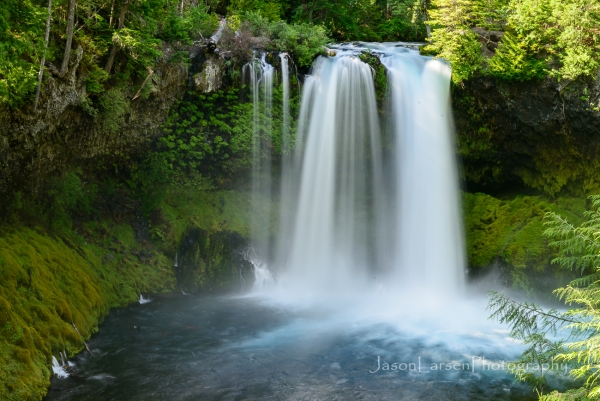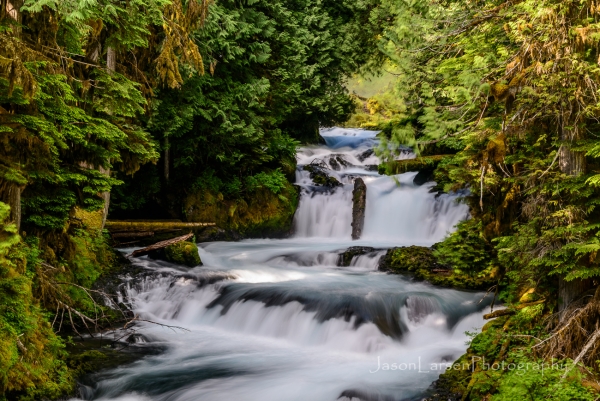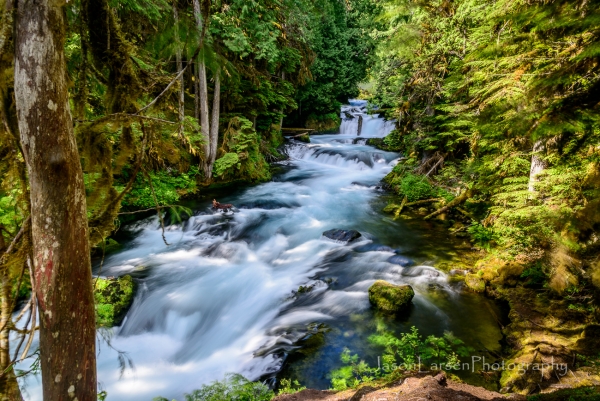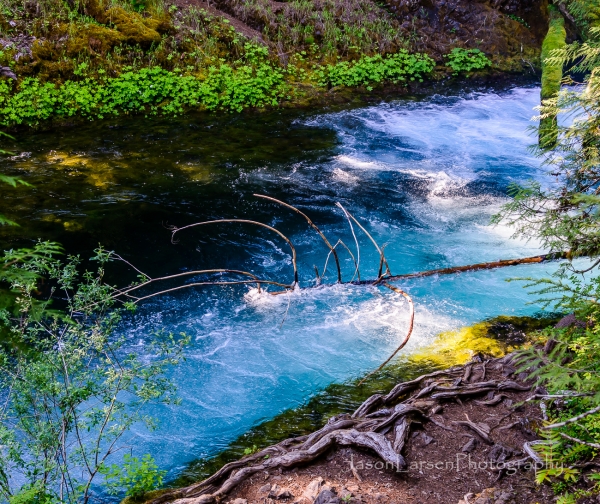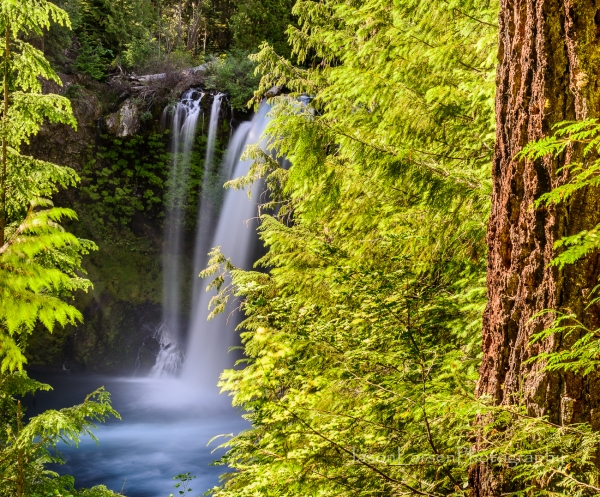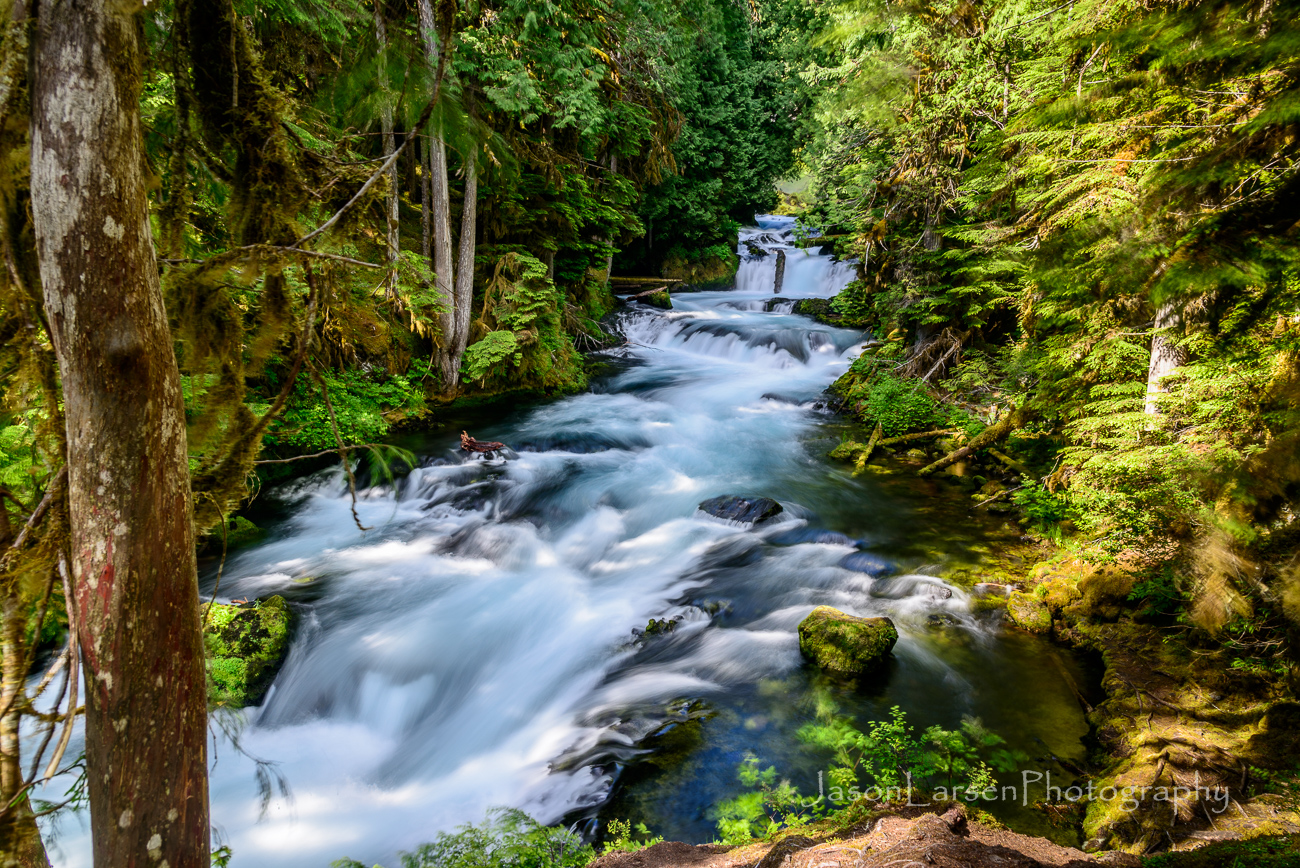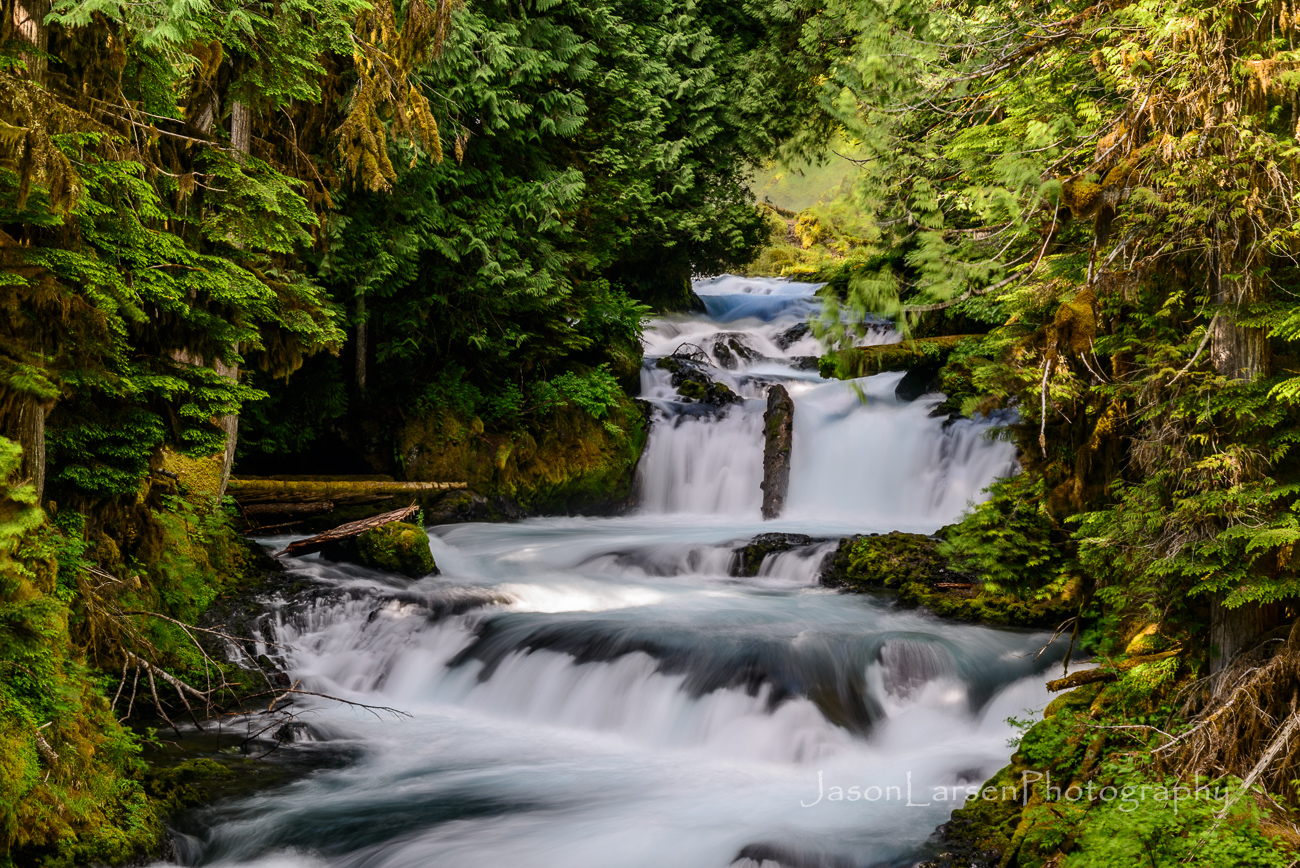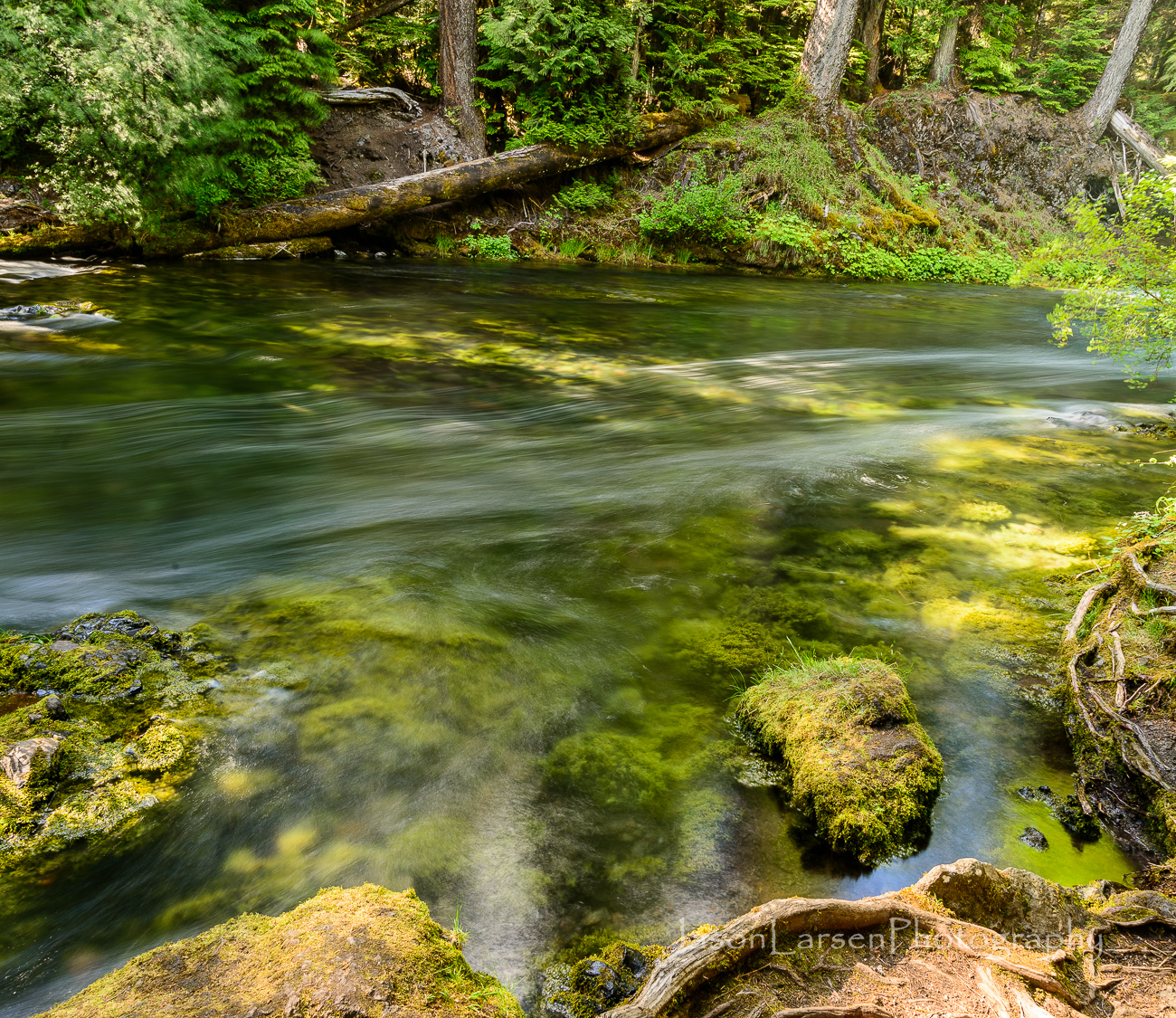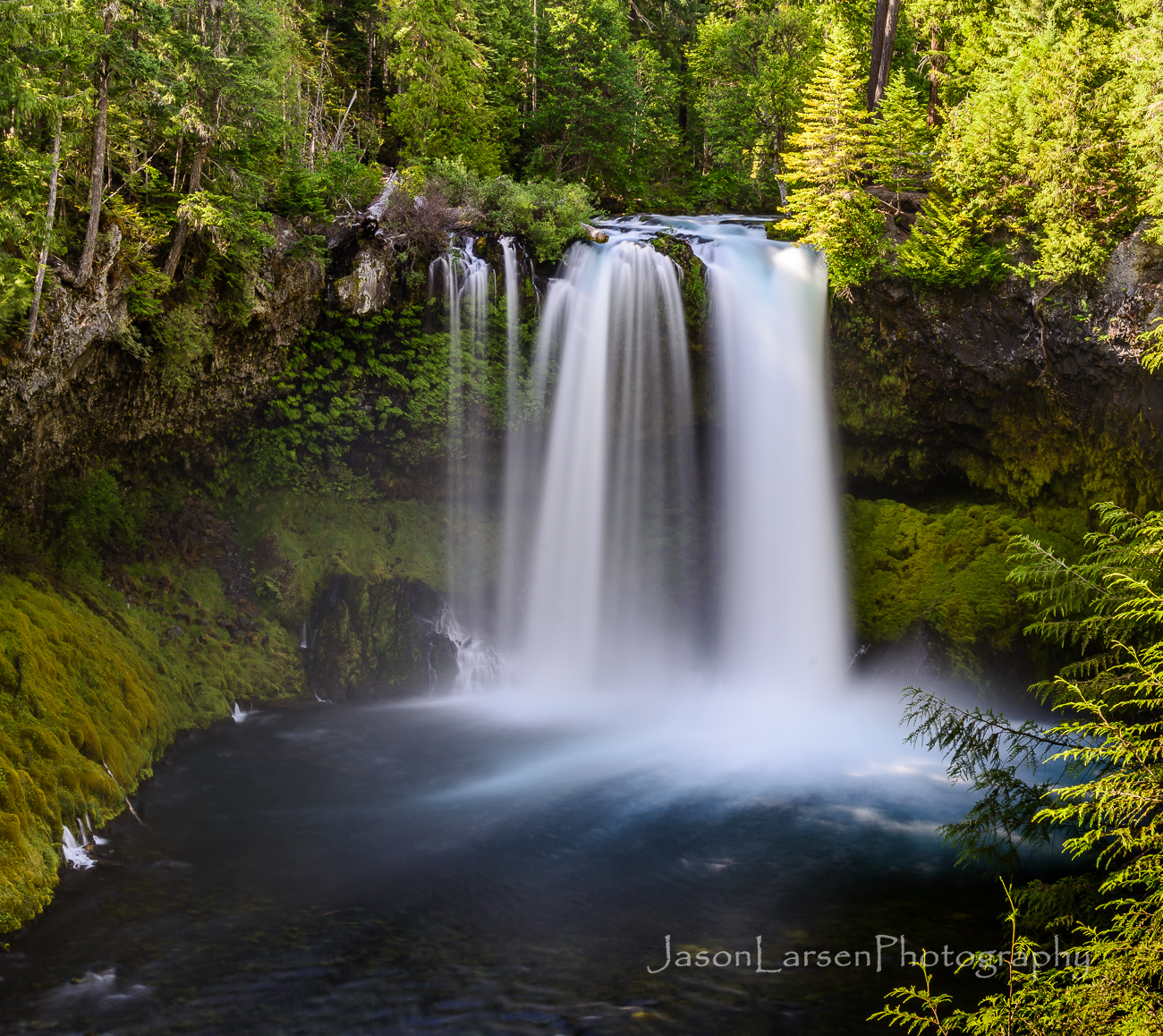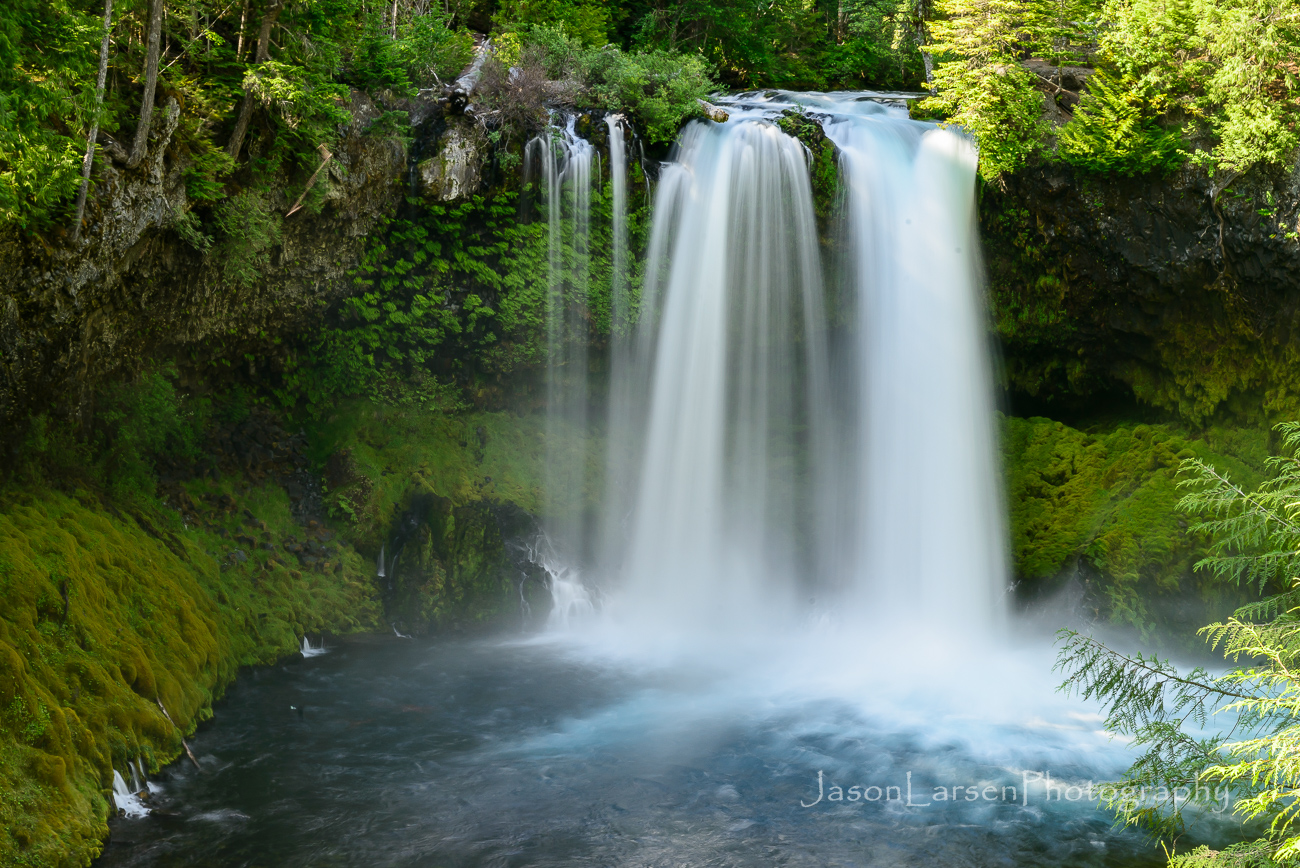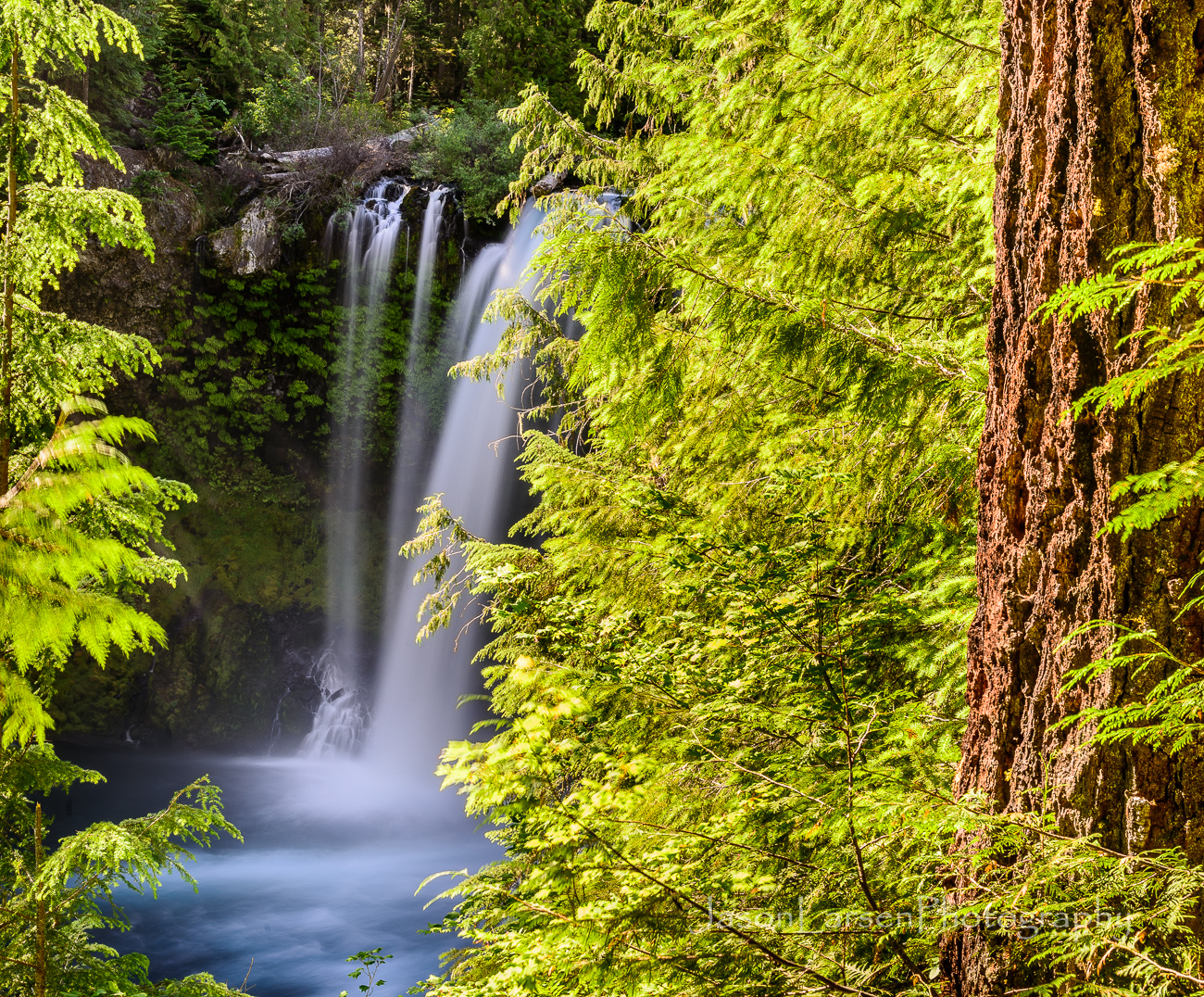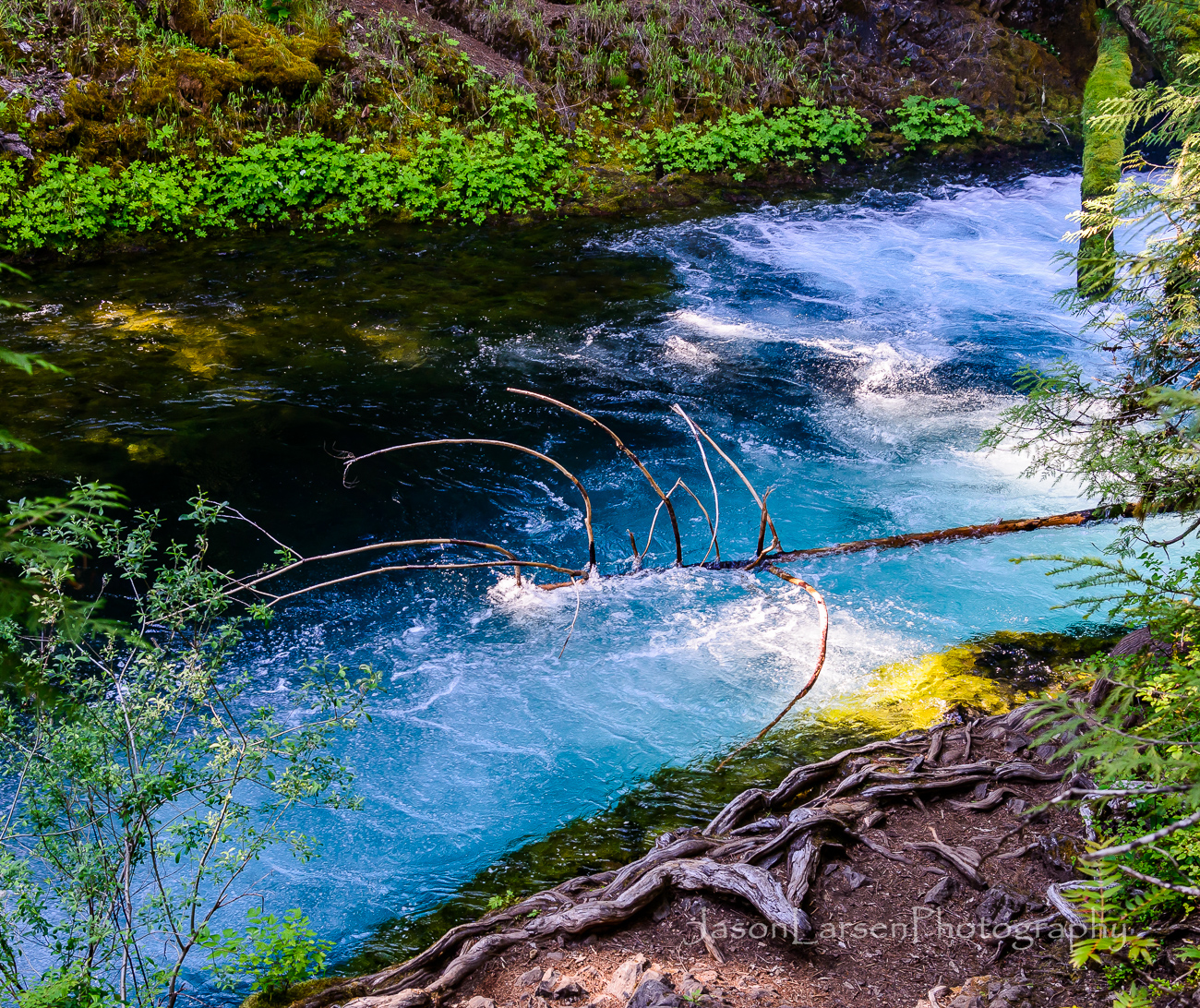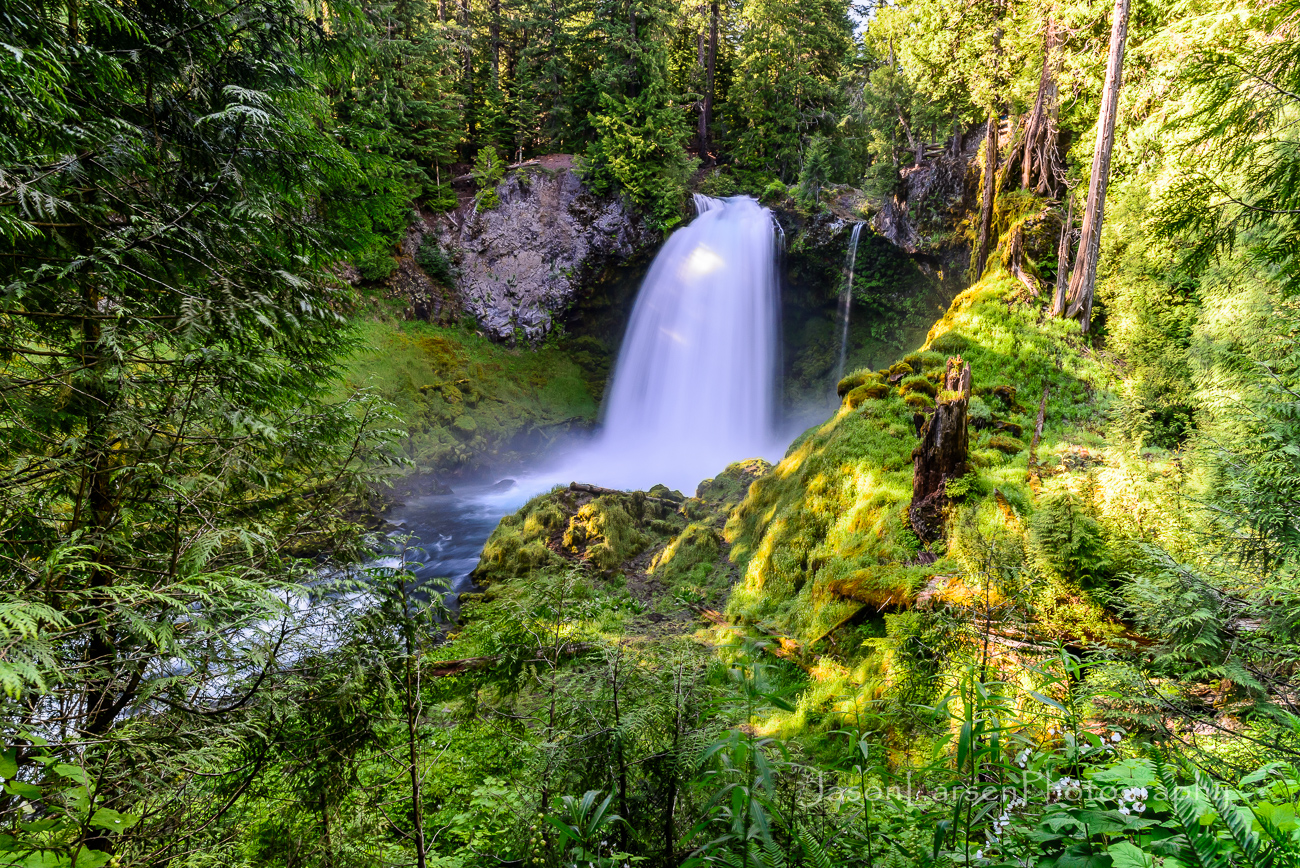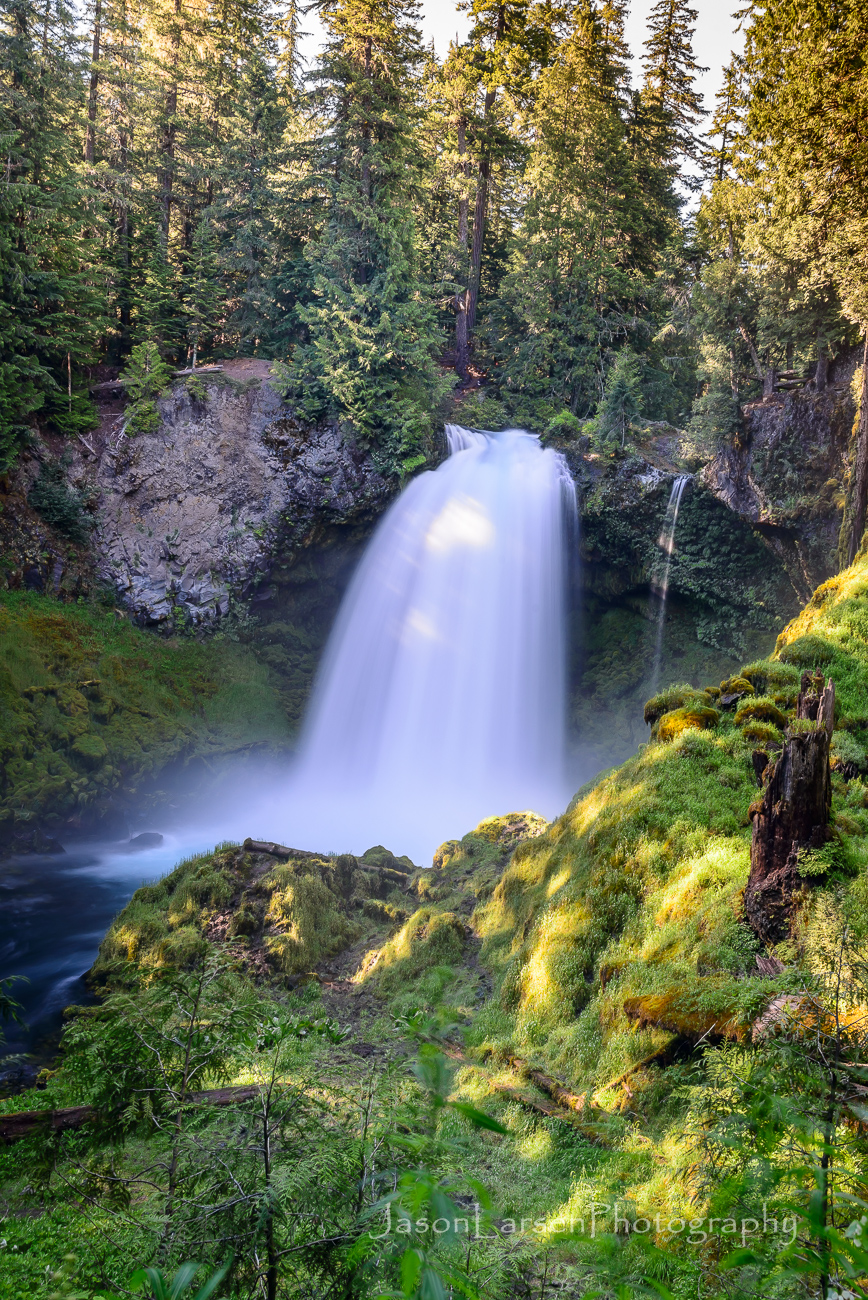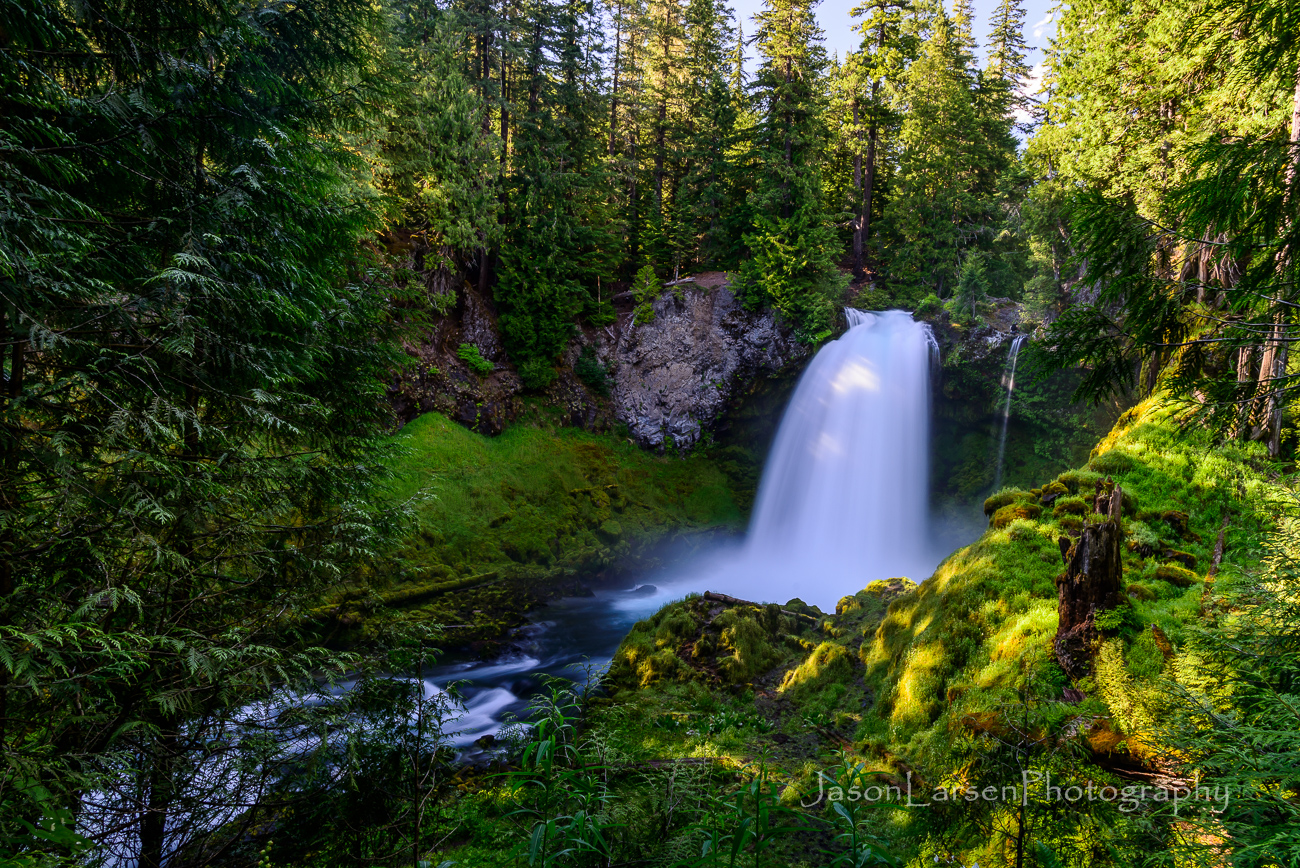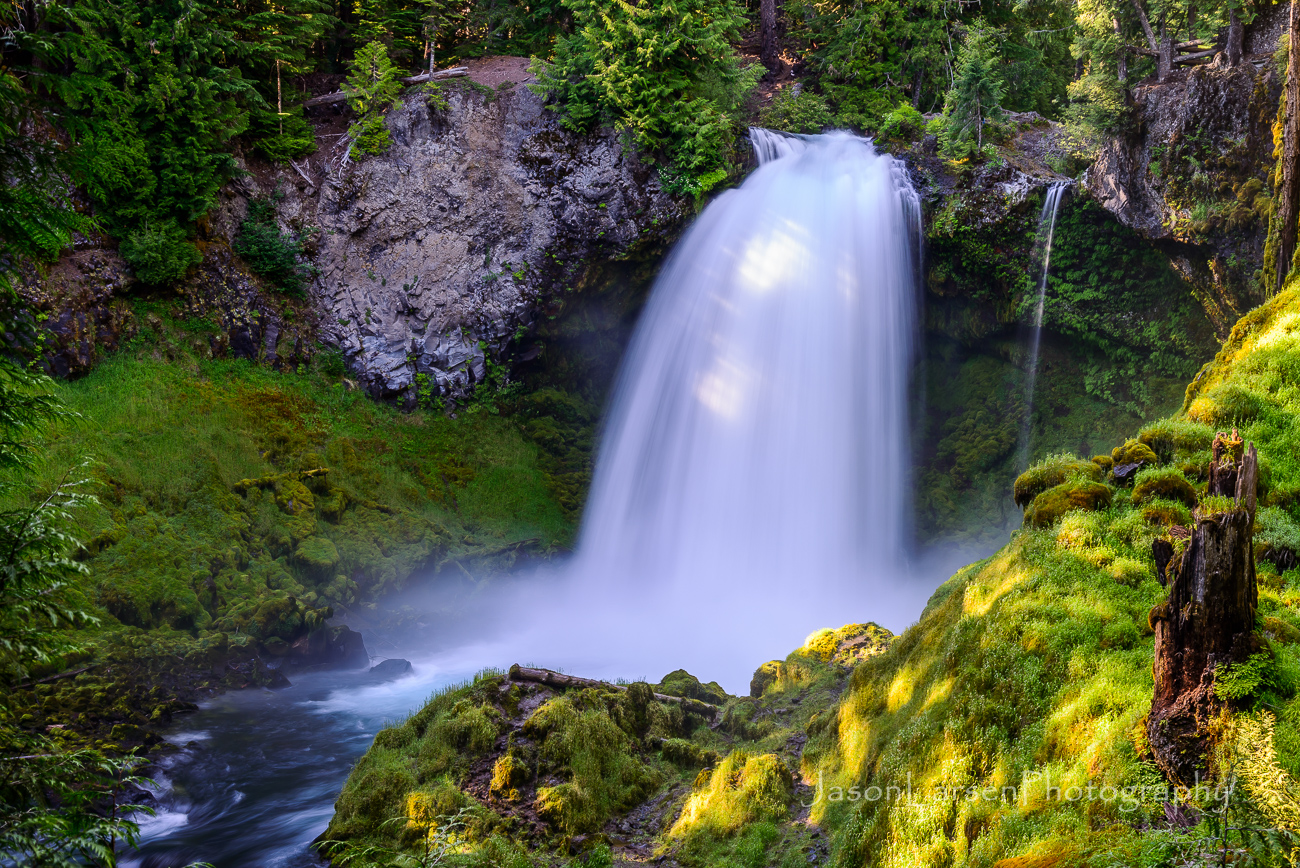Sahalie Falls, ISO 100, 24mm, f11, 2.5 sec
On our recent vacation to Oregon we drove past these falls after dark. I wanted to get some photographs of them so the next day my wife and I drove back the hour and a half from Eugene to see them.
Koosah Falls ISO 100, 65mm, f/16, 1.3sec
I was thinking that this was the first time that I had been to these falls, but apparently we came here on our honeymoon after camping down the road at ice cap campground. I remember the camping, but not the falls. Taunya has her own theories on why I don’t remember…The most acceptable is that I’m getting old.
Section of the McKenzie river downstream from Sahalie falls
ISO 100, 75mm, f/9.0, 1.0 sec
same section wider view
ISO 100, 24mm, f/11, 1.3 sec
This section of the river was really cool. The way the lava rock was on the bottom of the river created a deep channel to one side where all of the bubbles flowed from the rapids above it. This created a deep turquoise color in the water.
ISO 400, 38mm, f/5.6, 1/100 sec
With this shot of the river I was trying to capture the deep turquoise blue of the water channel. To achieve this look I needed to chose to a shorter exposure. With a longer exposure, the blurring of the white water on the surface covered up the cool blue color of the deeper channel.
ISO 100, 24mm, F/14, 2.0 sec
For me photography is about color and light. When I am looking at a scene most of the time I chose to shoot a particular shot is the color of the scene and the warm light. The late afternoon sunlight filtering through the trees on to a moss covered riverbed produced an almost magical scene. I tried many different exposures, but none of them did the color and the light justice.
ISO 100, 46mm, f/16, 3.0 sec
Interested in taking water and waterfall photographs? Thought I would share some pointers I find useful. First, if you are looking to get the soft flowing water look, it takes a longer exposure. Because of this a neutral density filter is helpful to decrease the light coming into the camera. I use an inexpensive variable density ND filter. Because it is less expensive I can’t use it to its full density or it casts an uneven darkening and color hue to the photograph. I will eventually purchase a better quality variable ND filter or a nice quality 10 stop solid filter. I prefer the variable filter because I can use it in a lot of different situations. The other nice feature of a variable filter is the ability to lighten the density and obtain the focus I need. Many times with a solid ND filter the scene is to dark to obtain a focus. So you end up taking the filter on and off between shots. A smaller aperture, larger f/stop number, is useful for two reasons. The first is it helps in reducing the light so you can decrease the shutter speed. The second is it increases your depth of field in a scene. One of your enemies in long expose photography is wind. It causes the foliage and other things in your image to move and blur. So if you can time your shots when the wind is minimal it helps.
The image above points out the advantage of increased depth of field. The tree on the right is in focus as well as the falls which are much farther back in the image. It also illustrates what wind will do to the image. If you look at the leaves on the left, they are blurred, not due to improper focus or camera shake but to the light wind that was blowing at the time.
Feel free to comment or ask questions below. Thanks for visiting. Here is the gallery of the keepers from the day.



